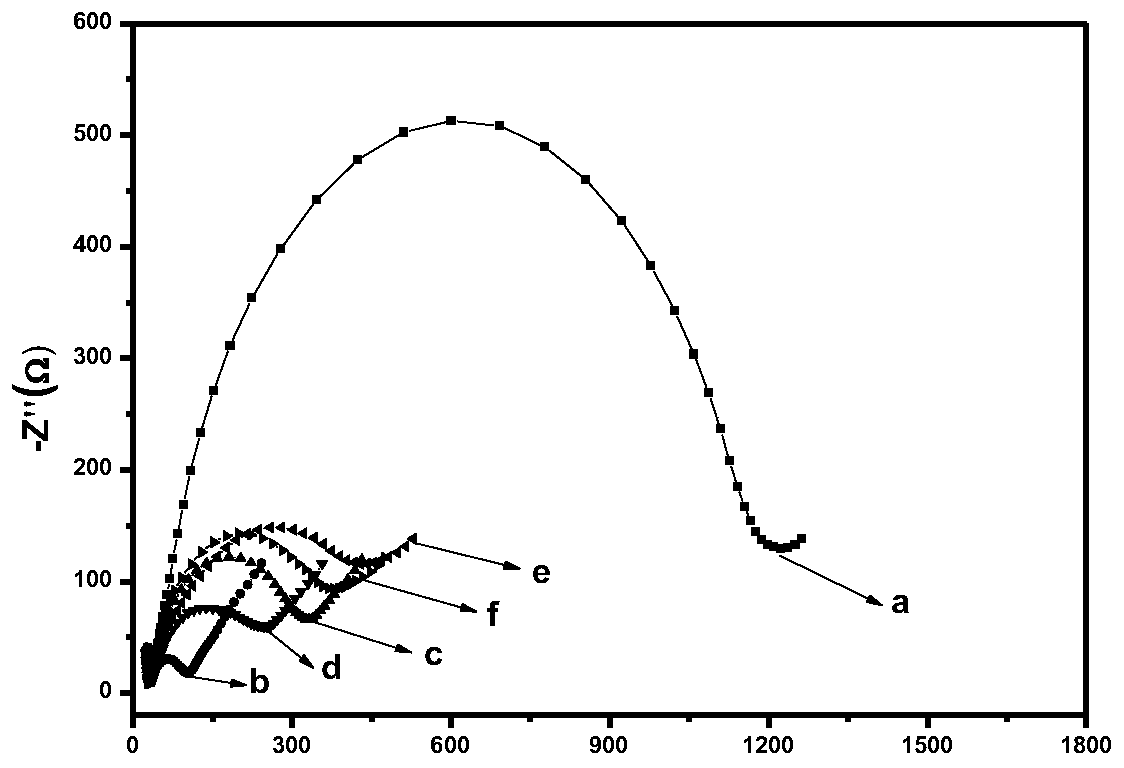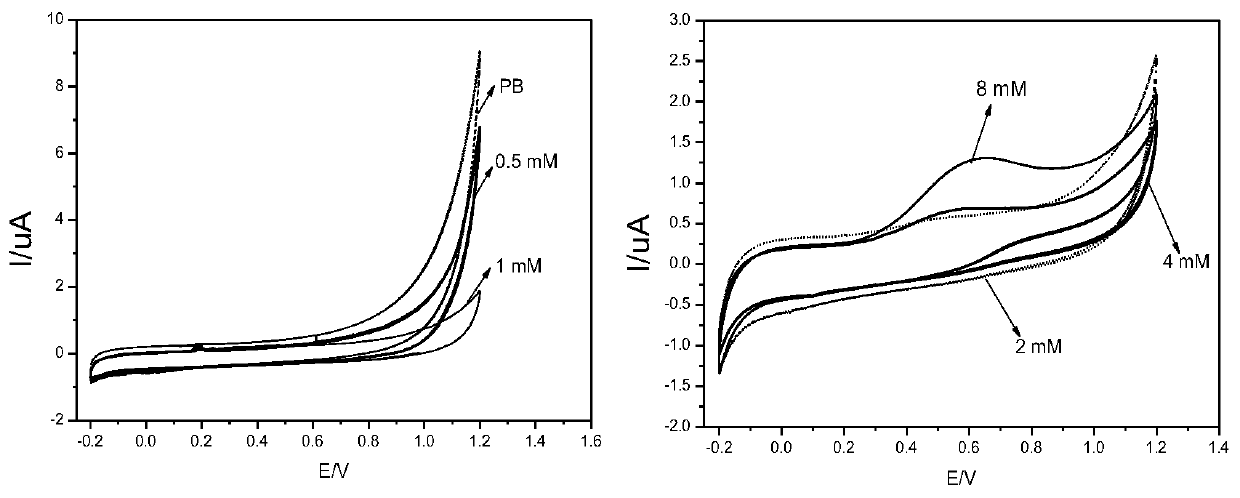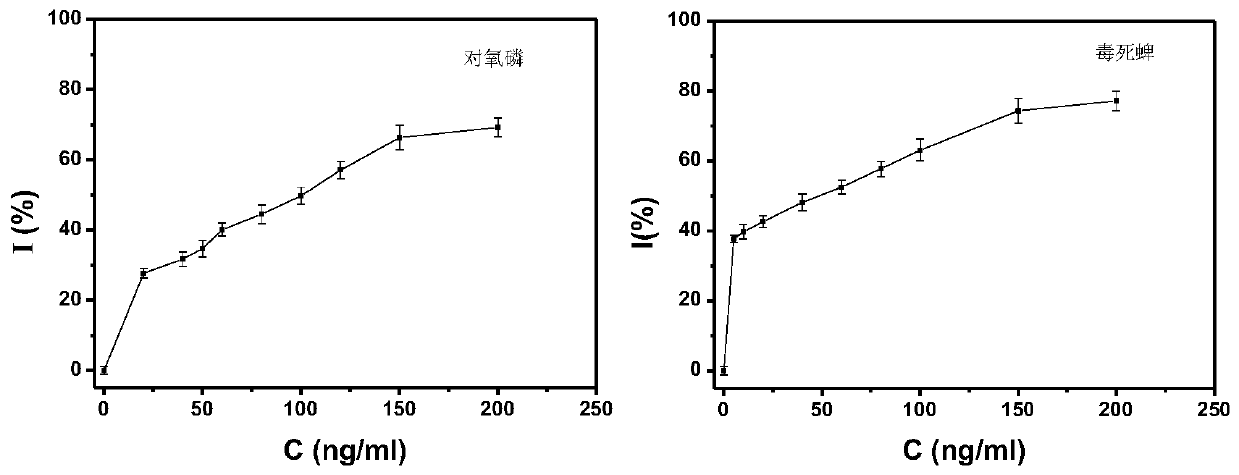Silk-screen printing carbon nanotube sensor and preparation method thereof and pesticide detection application
A technology of screen printing and carbon nanotubes, which is applied in the fields of analytical chemistry and electrochemical sensing, can solve the problems of cumbersome activation process, poor parallelism of electrode batches, and expensive equipment, and achieves strong anti-interference and good reproducibility. , prepare a simple effect
- Summary
- Abstract
- Description
- Claims
- Application Information
AI Technical Summary
Problems solved by technology
Method used
Image
Examples
Embodiment 1
[0087] Take 10 μL of 2 mg / mL PDDA solution and drop it on the interface of the activated screen-printed carbon nanoelectrode (referred to as the bare electrode), incubate for 30 min, wash with ultrapure water, and then blow dry with nitrogen to obtain the PDDA / screen-printed carbon nanotube sensor (C / PDDA), its surface covers the first PDDA modified film;
[0088] Take 5 μL of 0.1 mg / ml acetylcholinesterase solution and drop it on the interface of the above PDDA / screen-printed carbon nanoelectrode (C / PDDA), incubate for 60 min, rinse with PB buffer solution, and then blow dry with nitrogen to obtain acetylcholinesterase / PDDA / screen printing carbon nanotube sensor (C / PDDA / AChE), its outermost layer covers the first acetylcholinesterase modified membrane;
[0089] Take 10 μL of 2 mg / mL PDDA solution and drop it on the interface of the acetylcholinesterase / PDDA / screen-printed carbon nanotube sensor (C / PDDA / AChE) prepared above, incubate for 30 min, wash with ultrapure water, a...
Embodiment 2
[0096] Prepare the catalytic substrate acetylthiocholine chloride PB solution of 0.5mmol / L, 1mmol / L, 2mmol / L, 4mmol / L, 8mmol / L with PB solution (pH 7.4, 100mmol / L), the embodiment 1 The prepared PDDA / acetylcholinesterase / PDDA / acetylcholinesterase / PDDA / screen-printed carbon nanotube sensors (PDDA / AChE / PDDA / AChE / PDDA / CNTSPE) were mixed with different concentrations of acetylthiocholine chloride PB solution After acting for 20 minutes, electrochemical voltammetry (CV) measurement was carried out in the potential window of -0.2~+1.2V. The measurement results are as follows: figure 2 shown.
[0097] from figure 2 It can be seen from the figure that the CV scanning curve of the PB solution is flat and the background signal is very low; when the above sensors are respectively reacted with 0.5mmol / L and 1mmol / L acetylthiocholine chloride PB solution, the CV scanning curve has no obvious signal Change; continue to increase the concentration of acetylthiocholine chloride, that is, a...
Embodiment 3
[0099] Prepare methanol stock solution of 100mg / L pesticide chlorpyrifos (chlorpyrifos) and paraoxon (Paraoxon) standard substance respectively, prepare concentration respectively with PB (pH 7.4, 100mmol / L) buffer solution and be 50,100,200, 400, 500, 600ng / mL pesticide standard working solution.
[0100] The PDDA / acetylcholinesterase / PDDA / acetylcholinesterase / PDDA / screen printing carbon nanotube sensor (PDDA / AChE / PDDA / AChE / PDDA / CNTSPE) prepared in Example 1 was mixed with different concentrations of chlorpyrifos and paraoxon respectively. The solution was reacted for 20 minutes, after taking it out, it was rinsed with PB buffer solution, blown dry with nitrogen, and then incubated with PB solution of 4mol / L acetylthiocholine chloride for 30 minutes, and the electrochemical signal was measured at the potential window of -0.2~+1.2V. The linear relationship between electrochemical response signal and pesticide concentration is as follows: image 3 shown.
[0101] from image...
PUM
 Login to View More
Login to View More Abstract
Description
Claims
Application Information
 Login to View More
Login to View More - R&D
- Intellectual Property
- Life Sciences
- Materials
- Tech Scout
- Unparalleled Data Quality
- Higher Quality Content
- 60% Fewer Hallucinations
Browse by: Latest US Patents, China's latest patents, Technical Efficacy Thesaurus, Application Domain, Technology Topic, Popular Technical Reports.
© 2025 PatSnap. All rights reserved.Legal|Privacy policy|Modern Slavery Act Transparency Statement|Sitemap|About US| Contact US: help@patsnap.com



